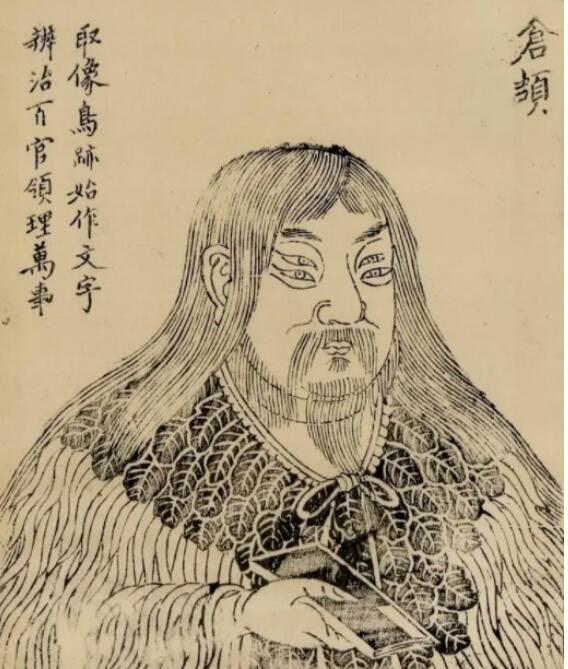“谷雨”为何被定为“国际中文日”?原来背后还有这样一段美丽传说
落絮游丝三月候,风吹雨洗一城花。
今日谷雨(Grain Rain),是春天的最后一个节气。几乎所有人都知道二十四节气,但很少有人知道谷雨的来历。
相传谷雨这一天,圣人仓颉造字成功,感动了上天,于是天帝便赐给人间一场谷子雨,以慰劳其圣功,因此才有了“谷雨”之名。
为了纪念仓颉造字,从2010年开始,联合国将每年的4月20日,也就是中国传统节气“谷雨”,定为联合国中文日,又在2020年把这一天改名为国际中文日,今年的谷雨正是第四个国际中文日。
谷雨之后,气温回升,阳光灿烂的日子也姗姗而来。诞生于谷雨的汉字,也如同这自然物候一般,生生不息,跨过漫漫岁月,缔造出属于中华民族的浩瀚史诗。
谷雨天,祭仓颉,让我们一起来探究汉字的起源,回溯上古时期的那段美丽神话......
象形文字创造者/ 仓颉(节选)

相传,上古时期的一个黄昏,人们正在野外劳作。突然,远处传来了奇怪的声音。只见金黄的天空中,飞来了数十只身披彩羽的大鸟,它们一边扇动翅膀,一边高声歌唱,像是在预示着喜事的到来。人们追随着大鸟的踪迹,发现它们在一户人家前久久盘旋。不久,这户人家里传来了婴儿的啼哭声。原来这里住着一对年轻夫妇,此刻他们的儿子降生了,而这个孩子就是仓颉。孩子的父亲抱着仓颉来到众人面前时,引起了一片惊叹,原来是这孩子的容貌实在太奇特了。他像小牛犊一般健壮,长得大头龙颜,最异于常人的是他双目重瞳(一个眼睛里有两个瞳孔)。
According to legend, one day at dusk in ancient times, people were working in the fields. Suddenly, there was a strange sound in the distance, and dozens of large birds with colorful feathers flew in the golden glow of dusk, flapping their wings and singing loudly as if heralding a happy occasion. People followed the birds and found them hovering in front of a house. Later, the cry of a new-born baby came from the house. A young couple lived there and their son had just been born. It was Cangjie. When the father carried the baby to the crowd, it caused a gasp of amazement, because his appearance was so peculiar—he was as robust as a calf, with a large head and a long face, and strangest of all, he had four eyes.
仓颉自小便表现出不同于寻常孩子的聪明,拥有过人的记忆力。在远古时代,人们最初靠结绳记事,大事打一大结,小事打一小结,相连的事打一连环结。后来,人们开始在岩壁上作画,用图画的方式记录发生的故事。仓颉成为黄帝的左史官后,专门负责记录黄帝部落发生的大事。但随着部落愈发壮大,事情也愈发繁多,如祭祀神灵、诸侯会盟、收获粮食等,高效准确地进行记录也变得愈发困难,这促使仓颉必须想出更好的方法来完成史官的职责。
Since childhood, Cangjie had showed he was more intelligent and had a better memory than other children. In ancient times, people initially used knotted ropes to remember things, tying a big knot for major events, a small one for minor events and a series for related events. Later, people began to draw on rock walls to record stories with pictures. After Cangjie became the Yellow Emperor’s court historian, he was responsible for recording the major events of the clan. However, as the clan grew larger and larger, the number and complexity of things to record increased, such as sacrifices to the gods, alliances between vassals and lords, and the timing of grain harvests. So it became increasingly difficult to record everything efficiently and accurately, which prompted Cangjie to invent new ways to fulfill his duties.
相传有一天,仓颉参加了部落的集体狩猎,走到一个三岔路口时,见到三位猎手在为走哪条路而争辩。一个人说东边有羚羊,一个人说北边有鹿群,最后一个人说往西可以追到老虎。仓颉一问才知道,原来他们认得地上的野兽脚印,所以才要往相应的方向追逐。仓颉猛然惊醒,既然野兽脚印可以代表这种野兽,那为什么不能用一种符号来表示相应的事物呢?
One day, Cangjie joined a group hunt and when he came to a three-way intersection, he saw three hunters arguing over which way to go. One man said that there were antelopes in the east, another that there were deer in the north, and the last tigers to the west. When Cangjie asked, he found out that they were making plans according to the footprints they had identified on the ground. Cangjie was inspired. Since footprints can signify different animals, why can’t symbols be used to represent other things?
于是,他日思夜想,到处观察,看天上星宿的分布、地上山川的脉络、鸟兽虫鱼的痕迹、草木器具的形状,不断描摹绘写,从而造出种种不同的象形符号,定下每个符号所对应的事物,并且把这种符号叫作“字”。
He thought day and night and observed everything—the distribution of the stars in the sky, the ridges of the mountains and rivers on the ground, the traces of birds, beasts, insects and fish, as well as the shapes of grasses and trees. He kept tracing and drawing them to create different pictographic symbols. Then he set down the things that corresponded to each symbol and called them characters.
日积月累,仓颉造的字越来越多,他把这些字献给黄帝,黄帝非常高兴,立即召集各部落的首领,命仓颉把这些字传授给他们,于是文字开始在中原大地上广泛使用。文字的出现使社会生产效率大幅提高,人们不必再通过口口相传的方式记录劳作和生活的经验,中华文明自此得以进入快速发展时期。
As time went by, Cangjie invented more and more characters, and he presented them to the Yellow Emperor, who was so pleased that he immediately summoned the chiefs of the clans and ordered Cangjie to teach them the characters. Thus writing began to be widely used in the Central Plains. The emergence of writing led to a dramatic increase in social productivity, eliminating the need to record their work and life orally and allowing Chinese civilization to develop rapidly.
仓颉造字是一个美丽的传说,目前考古发现的中国最早的文字是殷墟甲骨文,这是一种刻在龟壳或兽骨上的文字,其体系已较为成熟。可以推断,在商代之前一定存在更加古老的处于初创期的文字。并且,中原大地上应该存在很多个“仓颉”,他们在社会实践中,共同创造了表意的象形符号。经过数千年的发展,这些符号逐渐演变为今天我们依然在使用的规范汉字。
Of course, Cangjie’s invention of characters is just a tale. The earliest evidence of Chinese writing is the oracle bone script found in Yinxu, which was carved on turtle shells and animal bones during the Shang Dynasty. This system was already relatively mature, so it can be inferred that there must have been more ancient scripts beforehand. In addition, there must have been many people like Cangjie in the Central Plains who created ideographic symbols that evolved over thousands of years into the standardized Chinese characters we use today.